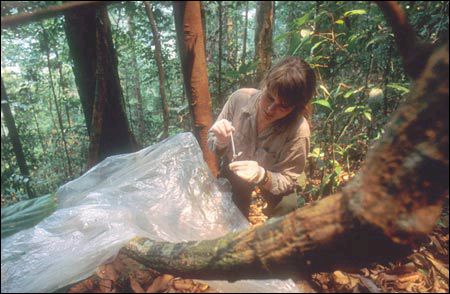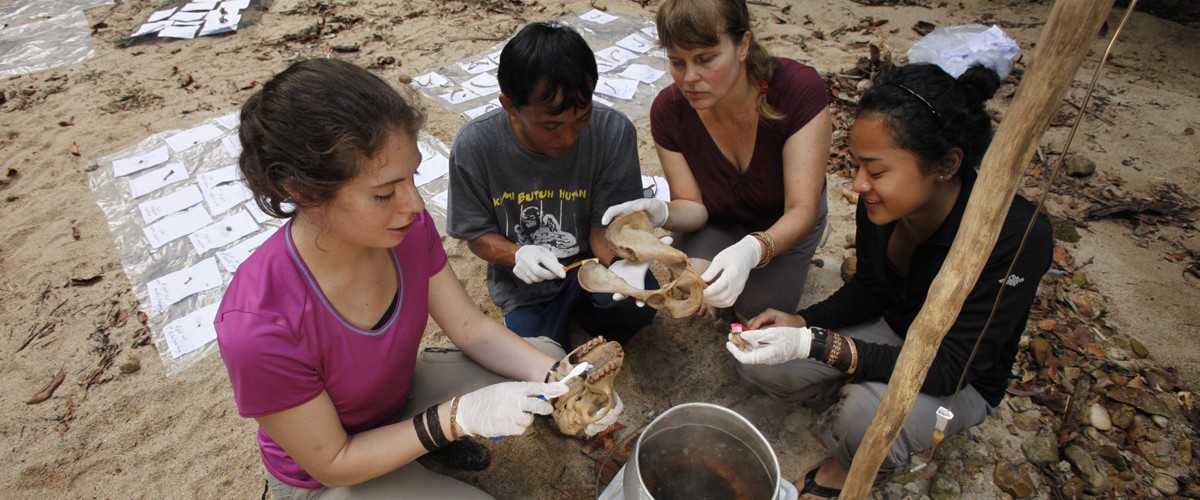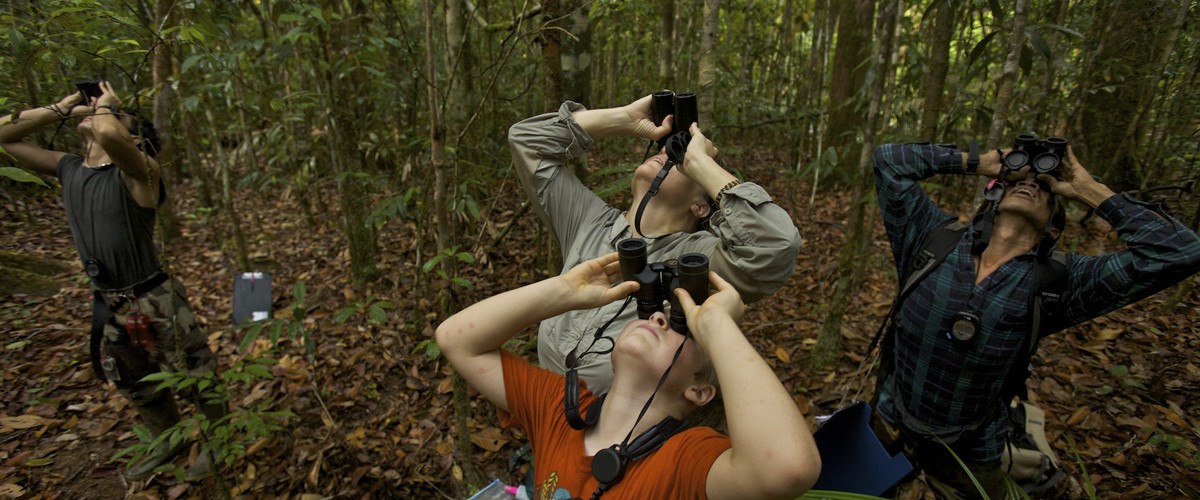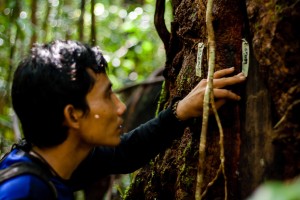
Internationally-renowned researcher and Gunung Palung Orangutan Project founder Dr. Cheryl Knott collects orangutan urine for analysis. Dr. Knott pioneered the urine collection and analysis methods that are now used at many long-term orangutan research sites.
Our research program uses cutting edge scientific techniques to investigate orangutan reproduction, behavior, social organization and physiology within an ecological context. Since 1994, the project has collected almost 66,000 hours of direct observation of wild orangutans, one of the most extensive data sets on a wild great ape ever collected. Detailed behavioral data are collected in addition to urine samples from which hormones can be measured. All orangutan foods are collected and processed to analyze the caloric and nutrient composition of the orangutan diet. To date over 600 food samples and more than 3,000 urine samples have been collected and analyzed. The project is also investigating broader issues related to great ape and human evolution. Our research is relevant to understanding the limits on the reproductive potential of orangutan populations and will contribute to the overall conservation effort to save this endangered great ape.
We are currently collecting data for a wide variety of projects, including:
-
Orangutan interbirth intervals and female hormonal functioning
-
Hormonal, behavioral and energetic differences between males: bi-maturism and intra-sexual dimorphism in males
-
Juvenile development, dependency and learning
-
Sex differences in feeding behavior, nutritional intake and foraging
-
Ranging patterns, habitat use and energetics
-
Socio-sexual behavior and hormonal correlates
-
Orangutan social organization
-
Genetic studies of paternity and relatedness
-
Skeletal evidence of male-male competition
-
Digestion and fecal analysis of juveniles vs. adults
-
Infection, parasite load and medicinal plant use
-
Habitat quality and orangutan densities
-
Canopy locomotion and positional behavior
-
Maternal behavior and energetics
The Gunung Palung Orangutan Project operates with local support from the Gunung Palung National Park Office (BTN-GP), Indonesian Institute for Sciences (LIPI), Center for Research in Development and Biology (PPPB), Universitas Tanjungpura (UNTAN) – Pontianak, and the Directorate of Nature Conservation (PHKA). For a list of our international supporters, see the Partners page.Check out our most recent publications!
Possible Male Infanticide in Wild Orangutans and a Re-evaluation of Infanticide Risk
Conserving Orangutans One Classroom at a Time: Evaluating the Effectiveness of Wildlife Education
Are Male Orangutans a Threat to Infants? Evidence of Mother–Offspring Counterstrategies to Infanticide in Bornean Orangutans (Pongo pygmaeus wurmbii)










